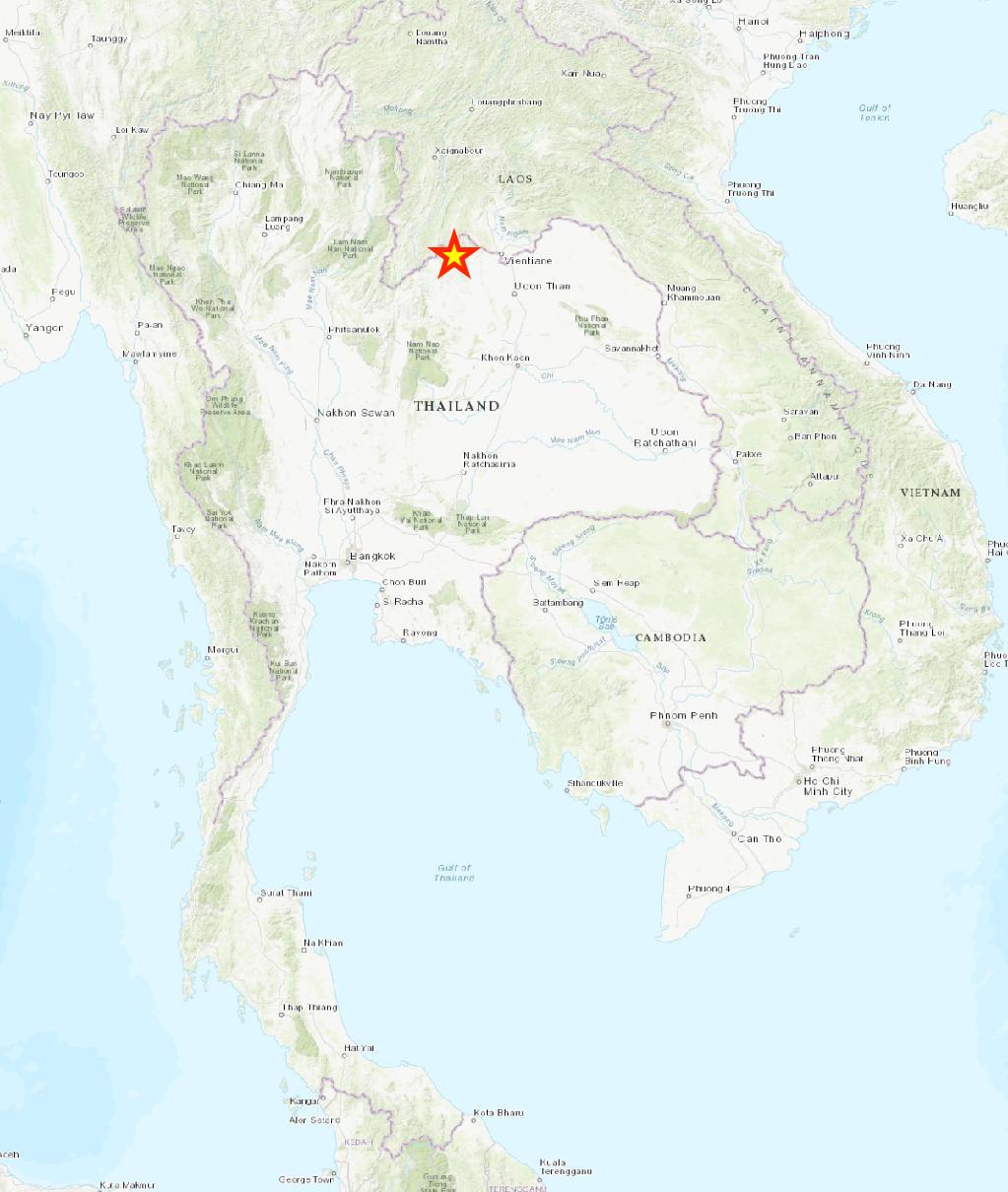Ban Sa Ngao Fm
Type Locality and Naming
Pha Nok Khao Platform (Loei region): It has a type section in the Ban Pak Niam–Ban Sa Ngao area 7–10 km NE of Pak Chom in the northernmost part of Loei Province.
Synonym:
[Figure: Screenshots from ESRI topographic map (from QGIS) with type locality highlighted with a star]
Lithology and Thickness
Characterized by radiolaria-bearing siliceous shale/acidic tuff and chert, often associated with basalt and impure bedded limestone. "According to Fontaine et al. (1981), the Ban Sa Ngao Formation consists of three members. The lower member is about 1500 m thick and composed of sandstone with a middle mudstone section. The shale and limestone middle member is about 600 m thick and the upper member comprises about 1300 m of shale and generally strongly folded chert. This total thickness (c. 3400 m) has not been confirmed and its contact with underlying strata has not been seen. Moreover, the three members may not be simply super- posed judging from fossil chronology." … "The fossil data show clearly that limestone beds in the ‘middle’ member of Fontaine et al. (1981) are younger than the chert- dominated strata in their ‘upper’ member. It therefore seems that the formation comprises two units. The Lower unit comprising sandstone, shale, siliceous shale and/or acid tuff, chert and rare basalt associations is thought to have been deposited in a relatively deep sediment-starved basin, although the radiolarian chert is not necessarily a pelagic deep-oceanic deposit. The Upper unit comprises sandstone, shale and limestone interpreted to be a shallow-marine facies. In this subdivision, the spore-bearing mudstone lens may be regarded as a component of the latter." [Ueno and Charoentitirat, 2011]
Relationships and Distribution
Lower contact
The Ban Sa Ngao Formation likely overlies Middle Devonian limestone, but their exact stratigraphic relationship has not been docu- mented.
Upper contact
Overlain (above the Mid-Carboniferous Unconformity) by shale and sandstone with limestone intercalations which belong to the revised Wang Saphung Fm, with local intervening coal- and plant fossil-bearing continental red-beds and possibly gypsiferous beds.
[Figure: Late Paleozoic major facies subdivisions on the western margin of the Indochina Block by Ueno and Charoentitirat (2011). (Slightly modified from Wielchowsky & Young 1985).]
Regional extent
GeoJSON
Fossils
Lower Member of Fontaine et al. (1981) yielded spores such as Densosporites sp., Lycospora sp., Aucyrospora sp., Reticulatisporites sp. and Endosporites sp. from a mudstone lens. They indicate a latest Devonian – Mississippian age. In shale, small assemblages of Goniatites and brachiopods were found. Foraminifers, corals, conodonts and calcareous algae occur abundantly in limestone in the middle member, yielding the foraminifers Endothyranopsis compressa plana, Omphalotis samarica, Endostaffella parva, Valvulinella youngi, Koskinobigenerina prisca, Asteroarchaediscus ex gr. gregorii, A. ex gr. parvus and Eostaffella mosquensis; the corals Heterocaninia pauciradiale, Kueichouphyllum sinense, Solenodendron furcatum, Siphonodendron petalaxoideum, Arachnolasma equiseptatum, Hexaphyllia mirabilis and Heterophyllia sp.; the conodonts Apathognathus cf. geminus, Hindeodella sp. and Neoprioniodus cf. montanaensis; and the calcareous algae Koninckopora tenuiramosa and Windsoporella jenkinsi. These fossils broadly suggest a late Tournaisian – Visean age, and are more probably referable to the Late Visean by foraminifers. In contrast, radiolarians are important in the siliceous shale and chert. … The fossil data show clearly that limestone beds in the ‘middle’ member of Fontaine et al. (1981) are younger than the chert- dominated strata in their ‘upper’ member." [Ueno and Charoentitirat, 2011]
Age
Depositional setting
Lower unit comprising sandstone, shale, siliceous shale and/or acid tuff, chert and rare basalt associations is thought to have been deposited in a relatively deep sediment-starved basin, although the radiolarian chert is not necessarily a pelagic deep-oceanic deposit. The Upper unit comprises sandstone, shale and limestone interpreted to be a shallow-marine facies
Additional Information
